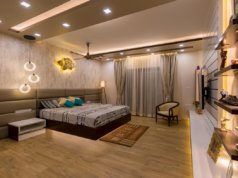 — Venugopal Koka, Director of Electrical and Lighting Marketing for SABIC’s Innovative Plastics business
— Venugopal Koka, Director of Electrical and Lighting Marketing for SABIC’s Innovative Plastics business
Saudi Basic Industries Corporation, headquartered in Riyadh, Saudi Arabia, ranks among the world’s top petrochemical companies. Through its global Innovative Plastics business, SABIC offers LED makers an extensive portfolio of speciality resins and compounds along with technological expertise to help optimise the performance, lifespan and aesthetics of LED lighting for commercial, residential and outdoor lighting applications. SABIC’s technology centre in Bengaluru, India offers a full set of capabilities to serve the lighting industry, especially in design optimisation and thermal management. Venugopal Koka spoke to Debdeep Chakraborty about the Indian LED lighting market.
India’s energy needs are increasing rapidly with population and economic growth. In this scenario, how can LED lighting help reduce lighting load, peak demand and overall energy consumption?
It can play a huge role. A 60W incandescent can be replaced by 7W or 8W LED which is almost one-eighth of the power consumption for the same output. Of course, the initial cost is an issue. However, in terms of life, it is 50,000 hours in case of LED as compared to 1,000 hours for incandescent. Then there is the benefit of low maintenance in case of LED. The initial costs for LED are coming down. Also, the LED wattages and outputs are going up per watt so that they become more efficient and lesser number of LEDs can be used for the same light output. Besides, we are playing our part in reducing the costs. As the costs come down, the energy saving story becomes very clear.
Compared to China and several western countries, the adoption of LED for lighting has been rather slow in India. What is the reason? Is it lack of awareness?
No. I think it is primarily cost driven. There is a lot of production still going on for incandescent and CFL, not out of choice, but because the demand continues to grow. When you look at usage, a LED with a life of 50,000 hours used in a house for three hours a day will last for almost 50 years. That benefit cannot be seen today. On the other hand, in commercial establishments like shopping malls where it is used 24 hours, it is different.
Today, all manufacturers are focused on LED. All investments are coming to LED. Therefore, I don’t think there is lack of awareness or drive. It is really a question of affordability and investment. If the initial investment and other incentives are provided by the government, like the schemes that were initiated by the government for promotion of CFL, LED will really grow. It is a question of economics rather than lack of awareness or focus. With regard to China, drivers such as subsidies and scale have made it very cost effective.
In many western countries, incandescent is banned now. Obviously, that means a big boost to LED. In India, the market for incandescent continues to grow. A 60W lamp can be bought for Rs. 20. On the commercial side, however, LED is witnessing growth. Very few commercial establishments are now using anything other than LED. Many state governments are also going for LED in street lighting.
Give us your assessment of the growth expected in the LED lighting market, globally as well as in India, in the next few years.
Globally, LED is a $20-billion market and it is growing at about 30 per cent CAGR. It is going to grow for the next five to six years. Later on it might taper off. About 75 to 80 per cent of the growth will be in general lighting, about 10 per cent in automotive, and some of it earlier was in consumer electronics. The Indian growth has to be very similar to the global growth. I have no reason to believe it will be any different. It must be kept in mind though that industry growth is very different from manufacturing growth. Today, there is lot of imports. So, the industry may be definitely growing but it may not be reflected in local manufacturing.
Given that China has a strong hold over the LED market, how can Indian manufacturers counter the challenge being faced because of Chinese imports?
The challenge is not LED lighting specific. China has got the scale and probably the incentives and subsidies to support manufacturing. In LED, imports from China are still very significant. It is a challenge but local manufacturing is picking up. We are seeing that a lot of tooling, which in itself is very complex for LED, is coming from outside. Just like we have component facilities in China, we have one in India. We are willing to support local manufacturers and local material suppliers.
In terms of expertise, I don’t think it is lacking. It is a question of being able to compete through innovation, designs. Global OEMs want to see how to meet the local demands, whether to import lamps or manufacture them locally. So, it is a broad economic issue rather than being an industry specific issue. I don’t think anybody is manufacturing the chip and the module in India but that is not a big factor. All the value is moving towards manufacture of lamps and fixtures and in that India has a very good established manufacturing base.
Can you throw some light on how your solutions make LEDs more efficient and cost effective?
Let us look at a LED lamp. The limitation in LED is that it is a unidirectional light source. The challenge is how to make it three dimensional. We have come up with a couple of solutions. One is to increase the beam angle. The nature of the plastic is such that you can do things that will increase the beam angle. In India, it is mostly 220 degrees. We are now bringing solutions which can increase it to 270-280 degrees. The increase in beam angle is for making it three dimensional. We are also working on flexible PCBs. So, specific solutions are being worked on to address issues related to LED. That is one aspect. The second aspect is cost. Even with our materials, you can reduce cost by going thinner. However, the issue is that it can be thinner but the safety regulations have to be met. So, we got to work on those solutions that will make them thinner but at the same time meet the safety regulations. We are also working on reflective filler for higher reflectivity. There are a lot of specific solutions we work on to make LEDs more efficient and cost-effective.
Please take us through SABIC’s portfolio of products and solutions focused on the LED segment.
Within the plastics domain, almost all solutions in our portfolio go into LED starting with diffusers and lenses, which is really the big thing because with LED a lot of glass has to be replaced, to reflectors for reflection of light. Then we have the KONDUIT portfolio for thermal management. In LED, with all the electronics, thermal management is very important. We are also bringing solutions for weathering for outdoor as again metal replacement, and also plastics. Besides, we have some new technologies like remote phosphor coming in. In thermal management, we have a solution for providing filament lighting. So, we are really looking at across the board portfolio in plastics for LED.











